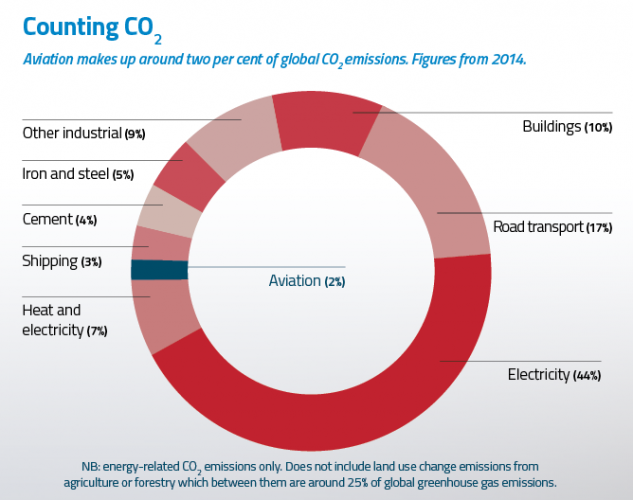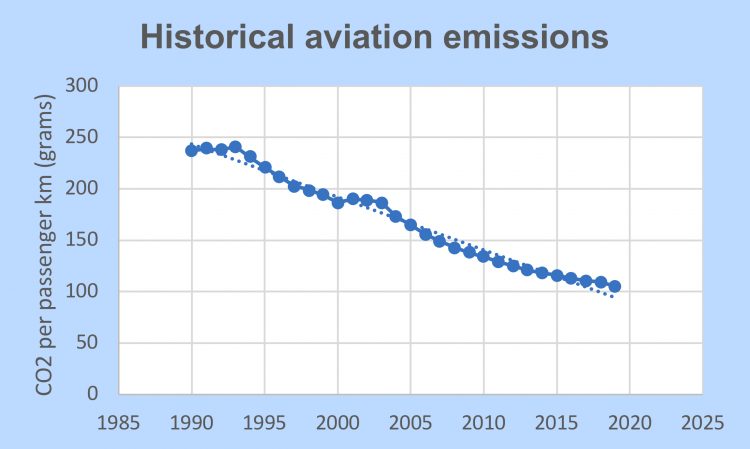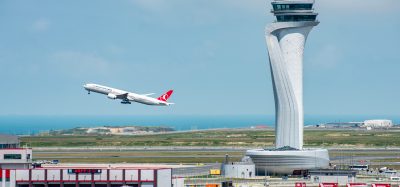Airports’ progression into becoming nodes for climate action
- Like
- Digg
- Del
- Tumblr
- VKontakte
- Buffer
- Love This
- Odnoklassniki
- Meneame
- Blogger
- Amazon
- Yahoo Mail
- Gmail
- AOL
- Newsvine
- HackerNews
- Evernote
- MySpace
- Mail.ru
- Viadeo
- Line
- Comments
- Yummly
- SMS
- Viber
- Telegram
- Subscribe
- Skype
- Facebook Messenger
- Kakao
- LiveJournal
- Yammer
- Edgar
- Fintel
- Mix
- Instapaper
- Copy Link
Posted: 4 March 2020 | Marina Bylinsky | No comments yet
In 2019, Airport Carbon Accreditation marked its 10th anniversary. Marina Bylinsky, Head of Sustainability at ACI EUROPE, evaluates the progress made by airports across the globe in regard to climate emergency.


Airports around the world are hard at work to address their impact on the climate within the Airport Carbon Accreditation programme. Now counting almost 300 participants, the programme works as an active enabler of carbon management and reduction in the airport sector. Against the backdrop of ever‑so‑alarming scientific findings, intensifying occurrence of extreme weather events and mounting public pressure surrounding the CO2 intensity of flying, a quiet revolution has been making advances on the ground for over a decade. Here in Europe, airports have expressed an even greater ambition in their leading-edge resolution to reach net-zero CO2 emissions from sources under their control by 2050 at the latest, launched in June 2019.
Decarbonisation targets
Carbon offsetting will not be accepted as a means to get there
In this initiative, spearheaded by ACI EUROPE, European airports have pledged to achieve full decarbonisation through deep emission reductions complemented by carbon removal and storage where necessary. Carbon offsetting will not be accepted as a means to get there. Furthermore, ACI EUROPE and its members have called on all aviation industry stakeholders globally to establish a joint ambition, vision and roadmap towards a net‑zero carbon emissions air transport system. As such, this resolution underlines the importance of unifying the decarbonisation vision and accelerating climate efforts at the global industry level.
Galvanising all the parts of the industry to act on the common goal of reaching net zero has never been more vital. When put in perspective, however big the momentum stirred up around carbon management at airports, it is only one piece of a very complex jigsaw. The public has had little patience for the intricacies of the global aviation system, including the reasons why the progress on reducing the climate impact of aviation has been moderate. The truth is, there is no silver-bullet solution to the carbon weight of operations in the sky. Currently, its share in the total global carbon footprint stands at two to three per cent, a percentage that is likely to increase due to rising demand and accelerated CO2 reductions achieved in other sectors.


Source: Air Transport Action Group: Aviation Benefits Beyond Borders, Fact sheet 3: Tracking aviation efficiency
Moving forward at various speeds
While the sector might be short on quick fixes to its climate impact, it has identified a number of ways to cut CO2 from its operations. ICAO outlined its ‘basket of measures’ in 2013, comprised of improvements in aircraft technology, improvements in aerospace and ground operations, production of sustainable aviation fuels (SAF) and, as a complementary and temporary ‘gap-filler’, the implementation of market-based measures. Arguably, all of them combined would deliver a substantial easing to aviation’s climate woes.
Single European Sky project
A complicated political landscape at the global and local level has constrained the development of some of these measures. For instance, the much‑awaited implementation of the Single European Sky (SES) project, that would see a complete makeover of the air traffic management (ATM) system in Europe, has been hanging on political squabbles for over two decades. According to EUROCONTROL, a fully functional SES would yield up to 10 per cent reduction in absolute emissions from flights, thanks to a more efficient use of airspace.
Sustainable aviation fuels
At the same time, the industry moved rapidly on other measures outlined by ICAO. The most prominent gains came about through the introduction of fuel efficiency improvements into new generations of aircraft. This effort has brought significant progress in fuel and CO2 efficiency, more than halving the amount of CO2 emitted per passenger kilometre compared to 1990.
Conversely, the research into development and use of alternative aviation fuels confirmed that their introduction does not require technical modifications to aircraft engines and can mostly rely on existing fuel supply systems. The term ‘sustainable aviation fuel’ points to the sound sustainability credentials that these fuels must demonstrate to be credible. Amongst others, this means that their production needs to avoid depletion of natural resources, negative impact on the food production ability and contribution to climate change.
Currently, the high cost of SAF is a barrier to their widespread use. In order to address the vicious circle of low demand and low supply, individual states are starting to move on strategic partnerships to accelerate the production of SAF. The most recent of such initiatives burgeoned in France, where a working group composed of government agencies and industry players has triggered a Call for Expressions of Interest to identify investment projects in second generation SAF production units in the country. More of such initiatives are expected to come up in the coming years.
CORSIA
Completing the package of measures is ICAO’s Carbon Offsetting and Reduction Scheme for International Aviation (CORSIA). Its mechanism aims to stabilise net CO2 emissions from international aviation at 2020 levels by requiring airlines to offset the growth of their emissions after 2020. As of today, 81 states representing 76 per cent of international aviation activity have volunteered to take part in the scheme. There are also regional market-based measures, such as the EU Emissions Trading System (ETS) in Europe, which cover aviation emissions and provide additional incentives for decarbonisation.
Meanwhile on the ground
Decarbonisation of infrastructure and operations on the ground is relatively more accessible in the present-day landscape, although it does come with a set of challenges of its own. The key to reducing emissions at airports is access to renewable energy, which differs greatly from region to region. Taking such differences into account is one of the advantages of Airport Carbon Accreditation. The formalised approach to CO2 reduction at airports has been instrumental in delivering tangible results each year. In the previous year, the collective efforts of accredited airports saved 322,297 tonnes of CO2.


Source: Air Transport Action Group: Aviation Benefits Beyond Borders, Fact sheet 3: Tracking aviation efficiency
The programme’s undoubted success transpires through growing participation figures in all regions and a continued upward trend of accredited airports, each year raising the stakes of their CO2 management within the programme. As of February 2020, there are 297 carbon accredited airports in the world – 148 participants in Europe, 55 in Asia-Pacific, 47 in North America, 33 in Latin America and the Caribbean and 14 in Africa. Every region of the world has at least one carbon neutral airport, which constitutes the current highest available level of the programme.
While responsible for a smaller share of emissions attributed to the sector, climate-smart airports can, and often do, act as catalysts of emissions’ management beyond their direct control. In order to achieve Level 3 and Level 3+ of Airport Carbon Accreditation, airports need to submit evidence of broad stakeholder engagement into climate mitigation efforts. These stakeholders include ground handlers, airlines, air traffic control, retail companies, food and beverage concessions and other business partners active within the premises of the airport and beyond.
Future efforts
With initiatives such as Airport-Collaborative Decision-Making (A-CDM), support to continuous descent operations and time-based separation, airports help to lower airline-associated carbon emissions. Furthermore, airports are important partners for airlines and suppliers in implementation of SAF. Oslo Airport was the first international airport to offer SAF as part of the common fuel distribution since 2016, followed by Los Angeles International Airport and Stockholm Arlanda Airport. Several other airports are gearing up to support SAF deployment, including Amsterdam Schiphol Airport, which is set to invest in the construction of Europe’s first sustainable kerosene plant. Based in Delfzijl, the Netherlands, the plant will be dedicated specifically to the production of sustainable jet fuel, propane and naphtha, relying mostly on regional waste and residual streams for raw materials, making it the first of its kind in the world.
Airports also have a role to play in influencing passengers’ choices, which individually add up to larger collective climate gains. Through the provision of better intermodal access offered to passengers – such as charging stations for private electric vehicles, electric or hybrid taxis, reliable and affordable railway connections – the emissions from transport to/from the airport can also be lowered.
Airport Carbon Accreditation will have to evolve in line with the need for more ambition
In 2019, Airport Carbon Accreditation marked its 10th anniversary. It has been an important milestone that created space for celebration of what has been achieved over the past decade, notably making carbon management at airports an industry standard. At the same time, it has been a trigger to revisit the goals that it set out to achieve and verify them against what is possible now and what will be possible in the decades to come. The scientific and political developments of previous years point towards the need for more ambition. In consistence with its track record of continuous improvement, Airport Carbon Accreditation will have to evolve in line with this need.
Working together
The pressure on aviation to address its carbon footprint has yielded an unexpected positive side effect – the potential to overcome traditional silos
The current pressure put on aviation to ramp up its efforts to address its carbon footprint has yielded an unexpected positive side effect – the potential for the industry to overcome some traditional silos between the various industry stakeholders in mutual understanding that sustainability and climate protection need to take centre stage. As the states and international institutions around the world declare climate emergency and improve their strategies to reach net-zero carbon emissions by 2050, the aviation sector needs to outline how it aims to contribute to that goal.
ACI EUROPE and its members have stated clearly their desideratum for the whole air transport system to move to net-zero carbon emissions under a common vision and roadmap. While the way forward leads through an uncharted territory, one thing remains certain: All industry actors need to move together and in the same direction. At the recent Aviation Sustainability Summit in Brussels, the different senior voices from across the industry and beyond reiterated the need for urgent, collective action. ACI EUROPE’s President, Jost Lammers, said: “We need to look at and work on every possible effective tool to get to net zero – from meaningful ATM reform, sustainable aviation fuels, R&D in new propulsion to CORSIA and the EU ETS, as well as intermodality. The complexities involved require industry, NGOs and policymakers to more than ever closely cooperate, so that we can chart the way forward and deliver.”
Biography
Marina Bylinsky joined ACI EUROPE in September 2015 and is Head of Sustainability; responsible for the coordination of all aspects of the association’s sustainability strategy. In this regard, she represents ACI EUROPE in various high-level EU, ECAC and EUROCONTROL fora. She also monitors the administration and ongoing evolution of the global carbon standard, Airport Carbon Accreditation which belongs to ACI EUROPE, and was leading the development of ACI EUROPE’s Sustainability Strategy for Airports.
Issue
Related topics
Air traffic control/management (ATC/ATM), Airport Carbon Accreditation (ACA), Airport Collaborative Decision Making (A-CDM), Emissions, Sustainability, Sustainable Aviation Fuel (SAF), Sustainable development
Related airports
Amsterdam Airport Schiphol (AMS), Los Angeles International Airport (LAX), Oslo Airport (OSL), Stockholm-Arlanda Airport (ARN)
Related organisations
Airports Council International Europe (ACI Europe), EUROCONTROL, ICAO


















